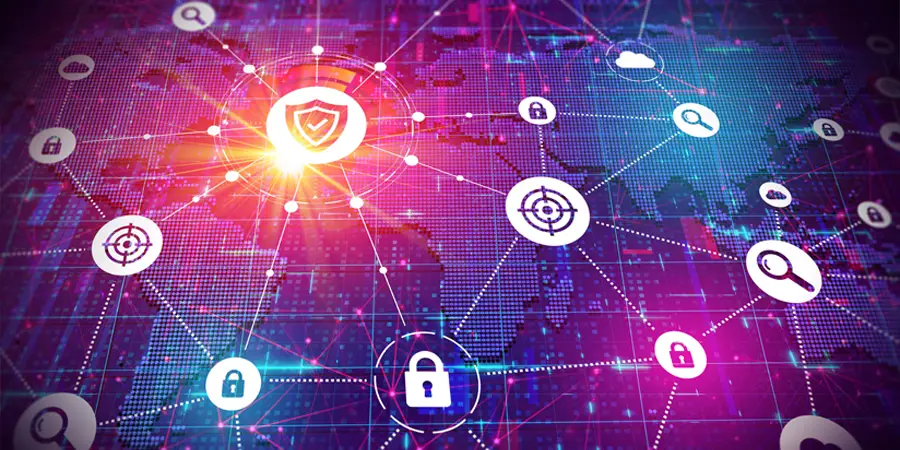
The rollout of 5G networks is revolutionizing the digital landscape—unlocking unparalleled speed, ultra-low latency, and massive connectivity. This shift is powering real-time applications across industries, enabling innovations in autonomous vehicles, smart cities, industrial control systems, and healthcare. But with this transformation comes an evolving set of cybersecurity challenges, especially at the network edge.
As organizations embrace the convergence of 5G and edge computing, they also inherit a new, complex security paradigm—one where traditional perimeter defenses are no longer enough. Understanding and mitigating these risks is now critical for ensuring trust, reliability, and resilience in the 5G-driven era.
The New Threat Surface: What Changes with 5G and Edge?
1. Massive Increase in Data Volume and Velocity
5G allows data to be transmitted at lightning speed with minimal latency. While this improves performance and enables real-time decision-making, it also increases the surface area for attacks. More data in motion means more opportunities for interception, tampering, or unauthorized access—especially if encryption and authentication are not rigorously enforced.
2. Decentralization of Computing
Edge computing pushes data processing closer to where it’s generated—on IoT devices, sensors, or local gateways—rather than relying solely on centralized cloud infrastructure. While this improves efficiency and reduces latency, it also decentralizes security controls. Each edge node becomes a potential vulnerability if not properly secured.
3. Weak or Inconsistent Perimeter Defenses
Traditional security models rely heavily on a centralized security perimeter. In 5G and edge architectures, this perimeter becomes fragmented. Security must be applied consistently across thousands—or even millions—of distributed devices and micro-environments, each with different risk profiles and hardware capabilities.
Critical Sectors at Risk
Supply Chains
Manufacturers and logistics providers rely on edge devices for real-time tracking, quality assurance, and predictive maintenance. A compromised edge node could inject false data, disrupt operations, or become a launchpad for lateral movement across the network.
Healthcare
In smart hospitals, edge devices manage life-critical systems like infusion pumps, patient monitoring, or robotic surgery tools. Any breach could have immediate consequences for patient safety and violate strict data privacy regulations like HIPAA.
Consumer Applications
From smart homes to connected vehicles, consumer-facing applications are increasingly relying on edge intelligence. A hijacked smart speaker or autonomous vehicle module could put personal data, privacy, or physical safety at risk.
Key Security Challenges in the 5G and Edge Landscape
1. Device Identity and Access Control
With thousands of edge devices coming online, ensuring that each has a unique, verifiable identity is paramount. Without robust identity management, attackers can spoof devices, impersonate nodes, or create rogue endpoints to siphon or manipulate data.
2. Firmware and Software Vulnerabilities
Edge devices often run firmware that’s rarely updated—or updated insecurely. These outdated components become low-hanging fruit for attackers who exploit known vulnerabilities. Secure firmware updates (OTA—Over-The-Air) and supply chain integrity checks are essential.
3. Network Slicing and Multi-Tenancy Risks
5G enables network slicing, where virtualized network instances serve different use cases or customers. A breach in one slice could potentially spill over into others if isolation mechanisms are weak or misconfigured.
4. Real-Time Threat Detection
Edge computing minimizes latency, but that also means security tools must operate in real-time. Traditional signature-based detection may be too slow or heavy. Lightweight, AI-driven threat detection models are becoming essential at the edge.
Best Practices for Securing 5G and Edge Environments
1. Implement Zero Trust Architecture
Assume that no user, device, or application is inherently trustworthy—whether inside or outside the network. Enforce continuous identity verification, least privilege access, and micro-segmentation across edge nodes.
2. Secure Firmware and Software Lifecycle
Adopt secure development practices, implement signed firmware updates, and maintain a clear Software Bill of Materials (SBOM) to track third-party dependencies and vulnerabilities.
3. Encrypt Data at Rest and in Transit
End-to-end encryption—between edge devices, core networks, and cloud—is non-negotiable. Use secure communication protocols (e.g., TLS 1.3, IPsec) and ensure encryption keys are managed securely.
4. Conduct Continuous Risk Assessments
Threat models must evolve as new devices, services, or use cases come online. Perform regular security audits, penetration tests, and real-time monitoring of both edge and core infrastructure.
5. Enable Secure Boot and Hardware Root of Trust
Use hardware-based security features to ensure devices only boot with verified software. Trusted Platform Modules (TPMs) and secure enclaves provide strong protection against tampering.
The Road Ahead: Staying Ahead of the Curve
5G and edge computing are not just technological upgrades—they represent a fundamental reshaping of how data is created, moved, and processed. As this ecosystem expands, so too will the sophistication of cyber threats targeting it.
Organizations must approach 5G security with a proactive, holistic mindset—integrating security into every layer, from chipsets to cloud APIs. This includes:
- Collaborating with telecom providers and OEMs to ensure security standards are enforced.
- Training cybersecurity teams on 5G-specific risks and tools.
- Investing in adaptive, AI-driven security solutions capable of protecting dynamic, distributed systems.
Conclusion
The promise of 5G and edge computing is undeniable—but so is the risk. As real-time use cases proliferate and sensitive workloads move to the edge, securing this decentralized architecture becomes a mission-critical task.
By embracing modern cybersecurity principles, strengthening device integrity, and ensuring vigilant monitoring, organizations can realize the benefits of 5G without compromising on trust or safety.
Secure the edge, and you secure the future.
Interested in learning more about 5G security frameworks or tools to protect your edge deployments? Contact our experts or subscribe for the latest updates in cybersecurity
At INFOCUS-IT, we specialize in advanced cybersecurity solutions—from threat detection and incident response to compliance and risk management. Whether you’re a small business or a large enterprise, our experts are here to protect what matters most.
Book your vulnerability scan now → infocus-it.com
📩 Support: support@infocus-it.com
📞 Helpdesk: +91-8178210903
hashtag#vapt hashtag#owasp hashtag#bugbounty hashtag#ethicalhacking hashtag#infocusit

